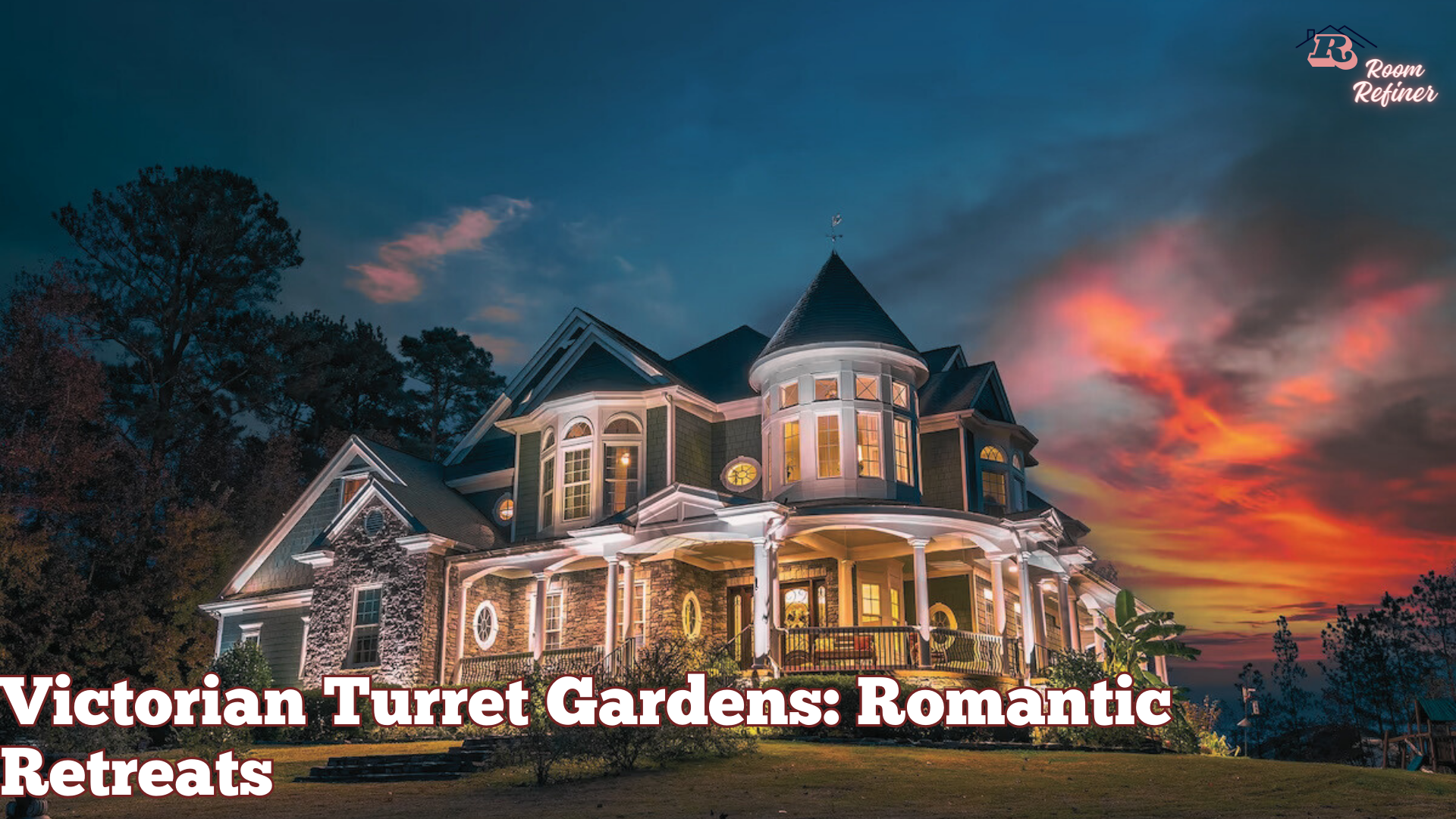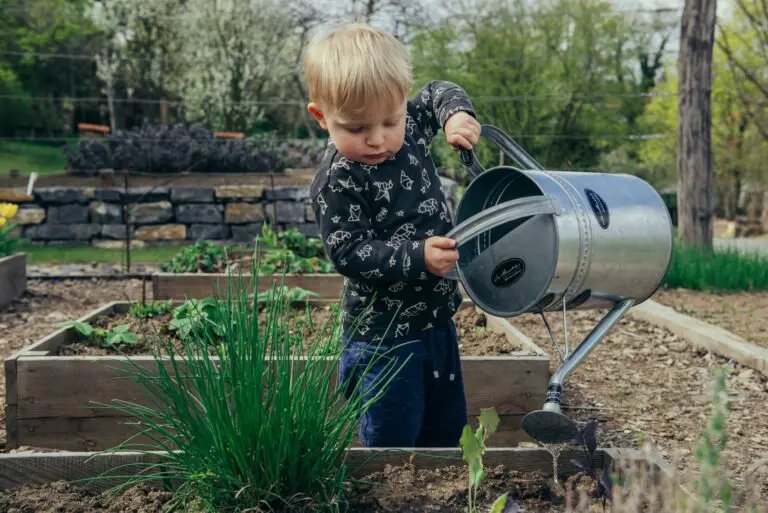In the midst of the Victorian era’s elegance and grandeur, a peculiar yet enchanting architectural feature took root: the turret. While turrets were often associated with imposing castles and fortifications, they found a softer, more romantic purpose in the Victorian Turret Gardens. These gardens became secluded, whimsical havens, providing solace, seclusion, and a dash of mystery.
Join us on a journey through time as we explore the captivating world of Victorian Turret Gardens – those hidden gems that offered an escape from the rigors of everyday life and served as romantic retreats for lovers.
I. Historical Context
The Victorian Era and Its Cultural Influences
The Victorian era, spanning from 1837 to 1901, was marked by a distinct shift in cultural values. It was an age of romanticism, and this fervor extended to garden design. Inspired by literature and art, Victorian Turret Gardens embodied the essence of this era, where emotions and sentiments were held in high regard.
The Emergence of Romanticism in Garden Design
Gone were the rigid, formal gardens of previous centuries. In their place, Victorian gardens embraced a more natural and romantic approach, with a strong focus on the beauty of the natural world. Garden designers incorporated elements such as meandering pathways, hidden nooks, and serene water features, creating a serene, almost dreamlike quality that invited contemplation and escape.
Turrets and Their Architectural Significance
Turrets, traditionally associated with medieval castles, became a central feature of these gardens. They were often perched atop garden walls or structures, offering panoramic views of the surroundings. Their architectural significance was two-fold: they added a touch of fairy-tale charm and, practically, provided an elevated vantage point to take in the splendor of the garden.
II. Design Elements of Victorian Turret Gardens
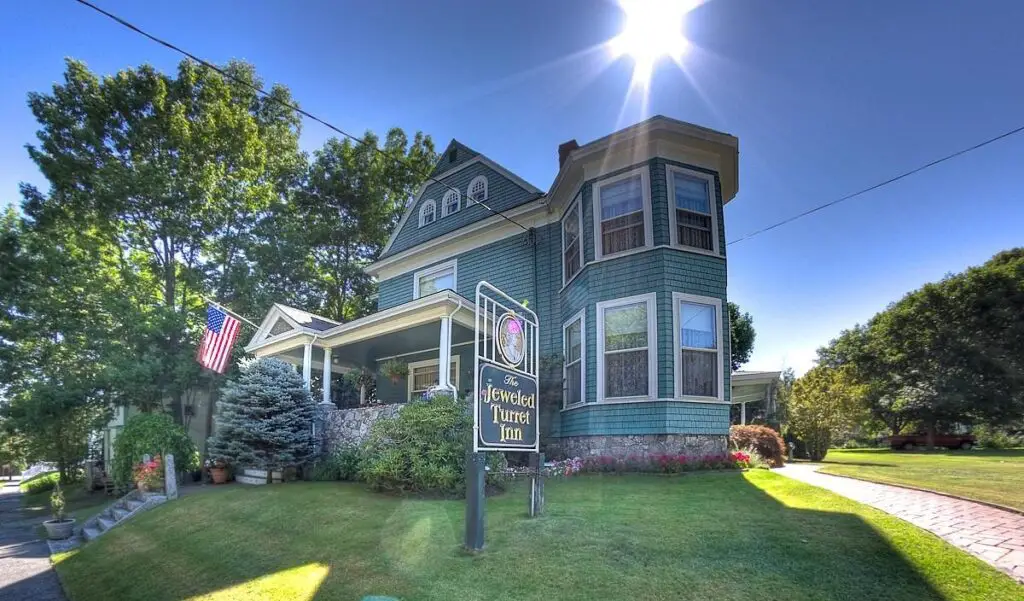
Lush and Ornate Landscaping
Victorian Turret Gardens were renowned for their extravagant use of plants and flowers. The essence of these gardens lay in their profusion of colorful blooms and greenery. A riot of colors, shapes, and fragrances greeted visitors, immersing them in a sensory wonderland.
Roses, hydrangeas, lilies, and a plethora of other flowers created a tapestry of hues, with each bloom chosen for its unique beauty and fragrance. The juxtaposition of various flower species and colors added depth and drama to the garden’s design. No inch of soil was left unplanted; the garden was a living work of art that delighted the senses at every turn.
Use of Exotic Plants and Flowers
One of the most captivating features of Victorian Turret Gardens was the fascination with exotic plants and flowers. This era was marked by exploration and discovery, and botanists were bringing back new and exciting species from around the world. These exotic imports found a home in the Victorian garden, adding an air of mystery and opulence.
Orchids, camellias, and other rare species were proudly displayed, showcasing the wealth and global reach of the garden owner. The allure of the unusual and the exotic added an element of adventure to these gardens, and it was not uncommon for visitors to marvel at plants they had never seen before.
Garden Structures and Features
Victorian Turret Gardens were not just about the plants; they featured an array of architectural elements and structures that added character and functionality.
Gazebos, pergolas, fountains, and trellises were often integral to the garden’s design. These structures served multiple purposes, from providing shaded seating areas to serving as focal points for the eye. They also acted as frames for climbing vines and trailing flowers, creating a sense of enclosure and intimacy.
The choice of materials, often ornate wrought iron or intricate woodwork, showcased the craftsmanship of the era, highlighting the importance of aesthetics in garden design.
Winding Pathways and Hidden Nooks
Victorian Turret Gardens were not merely open spaces but were designed as intricate, labyrinthine escapes. The pathways within these gardens were anything but straight and utilitarian. Instead, they meandered and wound their way through the garden, leading visitors on a journey of discovery. The deliberate winding of pathways added an element of surprise, as visitors never knew what they would encounter around the next corner.
Hidden nooks and crannies were strategically placed throughout the garden, providing secluded spots where lovers could retreat for intimate moments. The artful design of these pathways and nooks created a sense of exploration, allowing visitors to lose themselves in the garden’s beauty.
Water Features
The sound of running water was a constant presence in Victorian Turret Gardens. Fountains, ponds, and meandering streams contributed to the overall sense of serenity and enchantment. Water features provided a multisensory experience, with the soothing sound of water adding to the garden’s ambiance.
Fountains, often adorned with intricate sculptures and decorative details, served as central focal points, while ponds with water lilies and koi fish added a touch of tranquility. These water features not only enhanced the garden’s visual appeal but also created a soothing backdrop for leisurely strolls and romantic interludes.
III. Romantic Symbolism of Victorian Turret Gardens
The Language of Flowers
Central to the romantic symbolism of Victorian Turret Gardens was the “language of flowers,” also known as floriography. Each flower held a specific meaning, and lovers would often use these symbolic blooms to communicate their emotions and sentiments.
Roses, for instance, were universally associated with love, with the color of the rose indicating the specific message. A red rose conveyed passionate love, while a pink rose symbolized admiration.
White flowers symbolized purity, while lavender signified enchantment. The choice and arrangement of flowers in these gardens were carefully considered to convey hidden messages. A bouquet composed of particular flowers could speak volumes without a single word.
Hidden Messages in Garden Design
Beyond the language of flowers, the actual design of Victorian Turret Gardens carried its own set of hidden meanings. The winding, labyrinthine pathways symbolized the twists and turns of love, where the journey was as important as the destination.
Hidden nooks and secluded corners were more than design elements; they represented the need for privacy and the intimacy of romantic relationships. Lovers could escape the prying eyes of society and find a space where their affection could flourish in secret.
The layout of the garden encouraged a sense of discovery, where each turn could reveal a new surprise or moment of connection, mirroring the excitement and unpredictability of love itself.
Role of Privacy and Seclusion
Privacy was of paramount importance in Victorian Turret Gardens. In an era when strict decorum and societal norms were upheld, these gardens provided an essential escape from the watchful eyes of the world.
The secluded nature of these gardens allowed for moments of quiet intimacy, away from the judgment of society. It was here that couples could steal away for stolen kisses, whispered confessions, and the tender exchange of vows.
The garden’s design ensured that lovers could find a place of seclusion where their love could flourish in privacy, protected from the prying eyes and gossip of the Victorian era. The symbolism of seclusion in these gardens reinforced the notion that love was a deeply personal and private matter, meant to be cherished away from the scrutiny of the world.
IV. Notable Victorian Turret Gardens in the World
Victorian Turret Gardens, with their enchanting designs and rich history, have left their mark in various corners of the world. Here are some notable examples of these romantic retreats that continue to captivate visitors:
1. Osborne House Gardens, Isle of Wight, UK
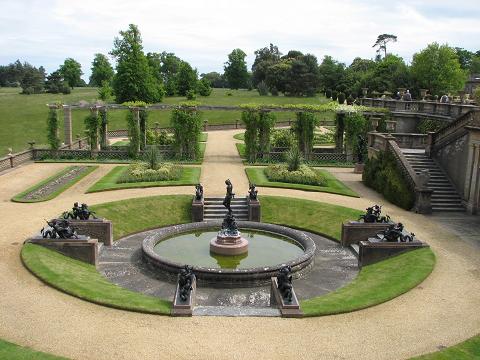
The gardens at Osborne House, located on the picturesque Isle of Wight, are a stunning example of Victorian Turret Gardens. Once the seaside residence of Queen Victoria and Prince Albert, the gardens are a testament to their love for each other and the beauty of the era.
The Swiss Cottage, a charming playhouse for the royal children, features a turret from which the children could enjoy sweeping views of the Solent. The gardens are replete with exquisite landscaping, secluded pathways, and even a walled garden with a delightful collection of exotic plants.
Osborne House Gardens remain a romantic and historical treasure that allows visitors to step back in time to experience the grandeur and intimacy of the Victorian era.
2. Waddesdon Manor, Buckinghamshire, UK
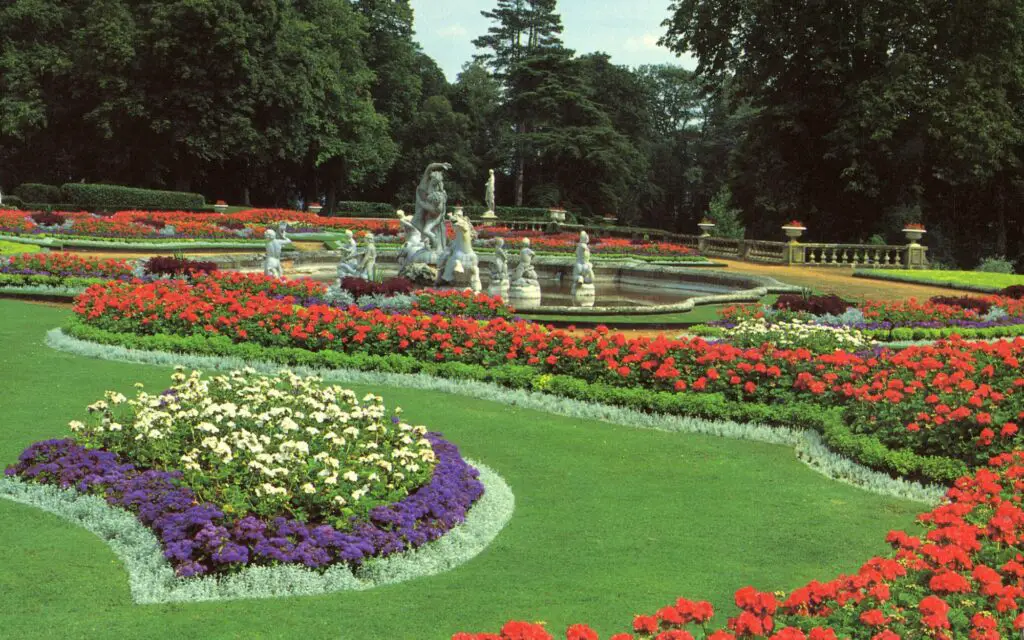
Waddesdon Manor, a French Renaissance-style chateau in the heart of Buckinghamshire, boasts gardens that are a work of art in themselves. With turrets and towers adorning the manor, these gardens embody the opulence and style of the Victorian era.
The Parterre, a grand terrace with geometric flowerbeds and fountains, is a showpiece of Victorian garden design. Beyond this, visitors can explore the Rose Garden, the Aviary Garden, and the breathtakingly beautiful carpet bedding displays.
The gardens at Waddesdon Manor are not just a testament to Victorian horticultural expertise but also a place of timeless beauty and romance.
3. Powerscourt Gardens, County Wicklow, Ireland
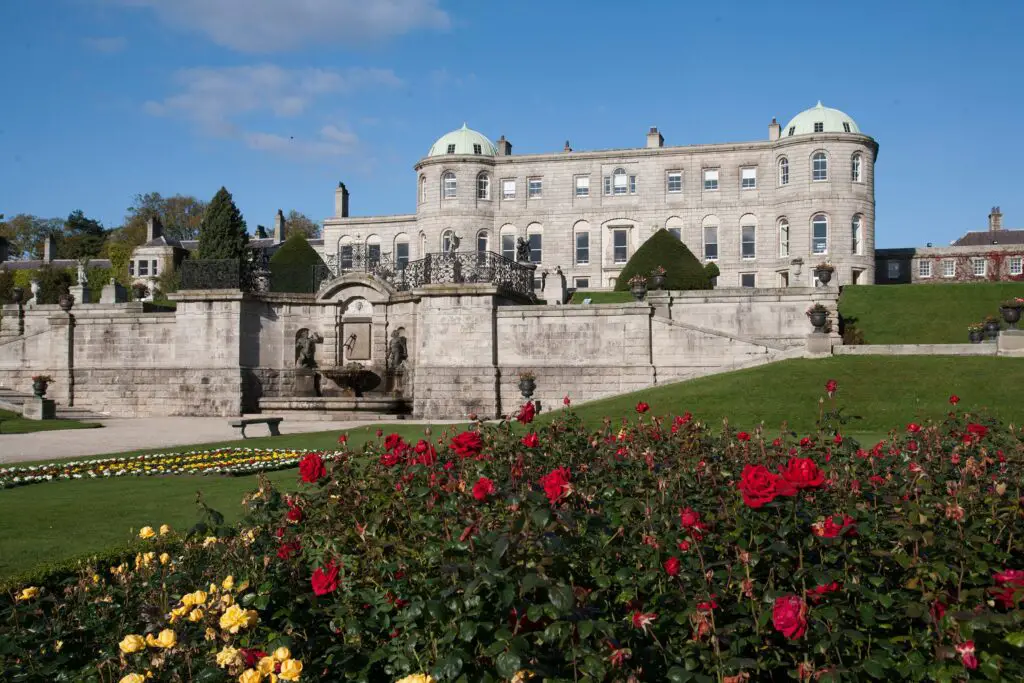
Powerscourt Gardens, located in the stunning County Wicklow, Ireland, is home to one of the most picturesque Victorian Turret Gardens in the world. The house itself features an ornate turret, and the surrounding gardens are an oasis of lush greenery and architectural splendor.
The Italian Garden, with its finely manicured lawns, terraces, and ornamental lakes, is a highlight of the estate. The Pepperpot Tower, an exquisite turret, offers panoramic views of the surrounding countryside. The Japanese Gardens, dotted with hidden corners and serene water features, add a touch of the exotic to this romantic garden.
Powerscourt Gardens are a harmonious blend of natural beauty and architectural elegance, making them a perfect representation of the Victorian era’s romantic ideals.
4. Paine Art Center and Gardens, Oshkosh, Wisconsin, USA
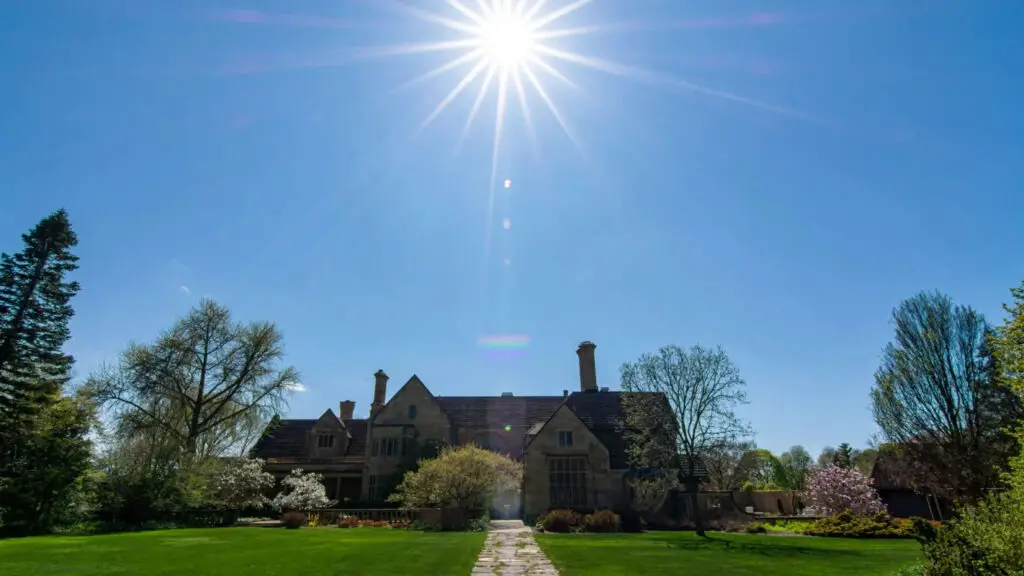
Victorian Turret Gardens aren’t limited to the United Kingdom or Europe; they can also be found across the Atlantic. The Paine Art Center and Gardens in Oshkosh, Wisconsin, is a prime example.
These gardens are a beautiful embodiment of Victorian-era romanticism, with meticulously maintained landscapes, stunning floral displays, and charming turrets throughout the grounds. The gardens include a sunken garden, a formal garden, and an English Garden House, all of which offer a sense of seclusion and tranquility.
The inclusion of turrets and other architectural features makes this American garden a delightful tribute to the romantic gardens of the past.
Conclusion
Victorian Turret Gardens remain as timeless, idyllic oases where love and nature intertwine. The allure of these romantic retreats has not faded with time but continues to inspire garden enthusiasts and lovers alike. As you wander through one of these enchanting gardens, it’s easy to understand why they were cherished as places where hearts could take flight amid the fragrance of blossoms and the rustle of leaves.
Frequently Asked Questions
1. What style of house has a turret?
Turrets are often associated with Victorian-style houses. They are cylindrical or conical towers that project from the building’s main structure, adding a touch of architectural charm.
2. What does a turret look like in a house?
A turret is a small, often round, or cylindrical tower-like structure that projects from the side of a building. It typically features windows and a conical or domed roof.
3. Why do Victorian houses have turrets?
Turrets in Victorian houses served both practical and aesthetic purposes. They added architectural interest, provided elevated viewpoints, and contributed to the romantic and picturesque qualities of the buildings.
4. What is the purpose of a turret on a house?
Turrets on houses had various purposes, including serving as observation points, allowing for better views of the surroundings, and enhancing the architectural character of the building.
5. What is a Victorian turret?
A Victorian turret is a turret-style architectural feature commonly found in Victorian-era houses. It is known for its ornate and decorative design, often featuring windows and decorative details.
6. How do you decorate a turret?
Decorating a turret in a house can involve a variety of design elements, including adding furniture, draperies, plants, or art. The choice of decor should align with the overall style and function of the turret, whether as a cozy reading nook or a romantic hideaway.
